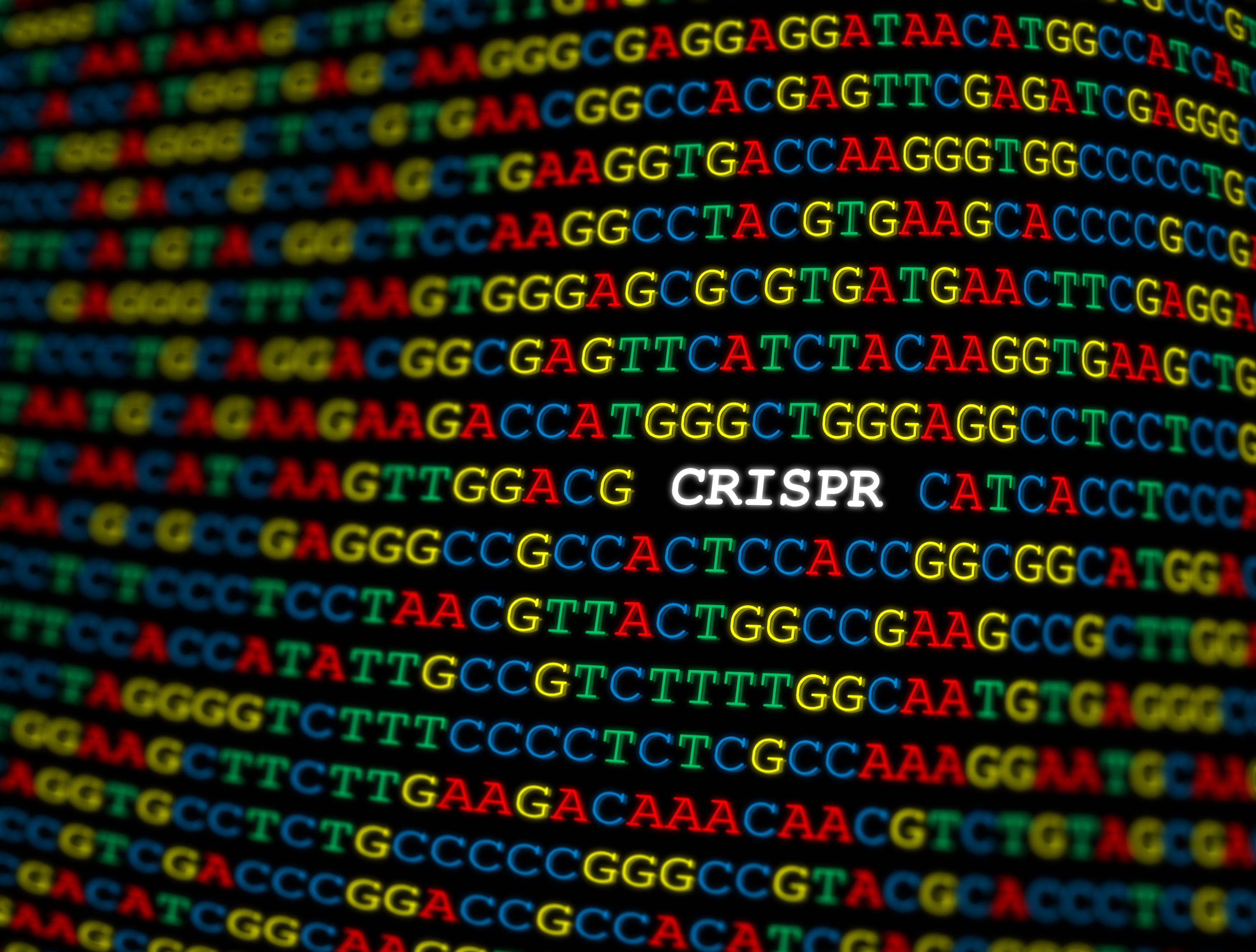*Updated reference to Pairwise with correction regarding agreement with Monsanto*
Editor’s Note: Vonnie Estes was the 2017 recipient of Rosalind Franklin award for leadership in Biotechnology. She is an agtech innovation consultant with a particular focus on biotech, navigating access and commercialization of gene editing, plant genetics, alternative proteins, crop inputs, and specialty crops. With a career working in leadership roles at prominent ag companies including DuPont, Monsanto, and Syngenta, along with small startups and venture funds, she is driven by a passion for agriculture and sustainability and consults with companies to develop and commercialize innovation. Her goal is to “commercialize science that is good for people and the planet.” She currently sits on the boards of Microvi Biotech and Creatus Biosciences. She can be reached on email here.
Management teams in plant genetics companies have likely been asked by at least one well-intending board member: “Are we using CRISPR? I sat next to this guy on the plane, and he said that CRISPR will change everything.”
Indeed, CRISPR, a gene editing tool, is shaping the future for both human health and agriculture. In medicine, researchers are working towards cures of genetic diseases such as sickle cell anemia and Huntington’s disease. In agriculture, CRISPR has the potential to address important challenges brought on by climate change, like drought and changing pest populations. We can also develop crops that are more sustainable with higher nutritional value and better flavor.

Breeders of fruits and vegetables have not had access to the earlier generation of molecular breeding tools due to cost, difficulty, and consumer fears, but now will be able to greatly improve their crops. CRISPR is a targeted approach to evolve varieties using the best native characteristics already available within the crop’s DNA. The goal of using CRISPR is to make plants more resilient, more productive, or more nutritious while changing consumer’s expectations and experience of food.
Gene editing is a collection of technologies, including CRISPR, which allows plant breeders to make precise and targeted improvements. Consumer’s fear of genetic modification in food has increased over time due to the incorporation of foreign DNA and other fears. Unlike genetic modification, gene editing does not involve a transfer of foreign genetic material between species. First-generation gene editing systems were developed in the 1990s. Zinc Fingers (ZFN) is one of the oldest technologies, owned by Sangamo BioSciences and licensed to Dow for agriculture use. ZFNs have been successfully used in the modification of various plants including tobacco, maize, and soybean. However, the system is time-consuming with the expensive construction of target enzymes, low specificity, and high off-target mutations. TALENs (transcription activator-like effector nucleases) were an easier to use substitute for ZFN’s, but still had proteins difficult to produce and deliver with some off-target problems.
CRISPR (Clustered regularly-interspaced short palindromic repeats), the newest gene editing technology, has been rapidly adopted due to its advantages over other tools in quality, efficiency, and technical flexibility. The relatively low cost and ease of use of CRISPR are spurring innovative research in academia and companies of all sizes, moving towards a democratization of crop-trait development.
As exciting as CRISPR is, a number of challenges for widespread adoption exist.
Reduction to practice
Before all of the possibilities of CRISPR can be realized, there are a number of obstacles in implementation. Challenges with the systems downstream of gene editing create bottlenecks. Effective delivery of CRISPR machinery to the right plant cells and subsequent regeneration of viable plants has not yet been accomplished for many crop species. Agrobacterium is the easiest delivery method, but as yet, the USDA would consider the resulting plant a GMO. Traditional tissue culture approaches remain the preferred method of delivery, but these are lengthy, labor-intensive, and prone to producing random somatic mutations, which together can reduce the efficiency gain provided by CRISPR tools. Additionally, many crop species are recalcitrant to regeneration through tissue culture. Novel delivery methods need to be established to achieve high-efficiency genome editing in plants. Reduction to practice is still a challenge and requires trained — and scarce — resources and high cap-ex facilities.
Regulation
One of the biggest restrictions to the global commercial use of gene editing is uncertainty around regulation. The USDA just ruled it would not regulate plants that could otherwise have been developed through traditional breeding techniques, as long as they are not developed using plant pests. This is a good start, however, there are a limited number of improvements that can be made within these criteria. If Agrobacterium is used as a delivery method or a greater number of genes are edited — which will be needed for complex traits — it will be considered GMO and more highly regulated. Most crop genetics and food production companies operate globally: shipping seeds, plant materials, or final foods worldwide. The EU has not yet ruled if gene edited crops fall under the genetically modified organism rule, although there is some indication that may change. Until this is clear, many crop genetics companies will not risk the potential trade barriers of using gene editing technology.
Consumer acceptance
Equal to regulatory constraints, consumer acceptance inhibits many crop companies from using gene editing. Many fruit and vegetable companies try to avoid brand association with “gene editing,” which, for many consumers, is the same as “GMO.” The National Organic Standards Board made a formal recommendation against including gene editing in USDA organic standards in August 2017.
The large Ag companies are mounting expensive campaigns to educate the public on the benefits of gene editing, trying to avoid the resistance that developed toward GMOs. Consumers are more likely to accept the technology if they get a direct benefit, such as better taste or higher nutritional value. Food producers are right to be cautious, but I’m hoping the younger, tech-savvy, more demanding food consumers will be accepting of gene editing technology.
Patents
Unless you are a lawyer or patent geek, you probably have not followed all the legal battles around CRISPR Cas9. At the risk of oversimplifying, there are two main parties: the Broad Institute and UC Berkeley. Both say they discovered and own the use of CRISPR Cas9 for plant use. Right now, it looks like the Broad Institute is winning the fight in the US. A license from the parties is not needed for research, but as soon as a product moves towards commercialization, a commercial license is required. In ag, Corteva Agriscience (the new name of the agricultural division of DowDuPont) has the rights to use and sublicense the CRISPR Cas9 technology from both the Broad Institute and UC Berkeley (through startup Caribou Biosciences), along with other CRISPR Cas9 licenses. The process of getting a license from Corteva is said to be cumbersome, which has opened an opportunity in the market for patent workarounds with different enzymes and systems that fall outside the CRISPR Cas9 patents.
Potential partners in gene editing
There are a number of potential partners to work with for access to a gene-editing license. The following list is not exhaustive, as new companies are continuously popping up. Most of these providers will only supply the license to do the edit, not identify targets or do the edits in a specific cultivar. Many smaller seed/genetics companies do not have the laboratory facilities or capital to build facilities for sequencing, linking phenotype to genotype, and identifying targets. Reduction to practice in a particular crop requires capabilities of delivery to plant cells, tissue culture and plant regeneration. Genetics companies are working with universities and trying to outsource various pieces of the process. A number of companies are developing capabilities for parts of the development pipeline, such as Phytelligence for some molecular breeding and propagation and Benson Hill Biosystems for bioinformatics and breeding support.
I work with clients to navigate this currently disconnected nexus. The necessary downstream network to develop crops past the gene edit will need to be further developed for implementation of gene editing to be truly democratized.
Corteva: As mentioned, Corteva has the most extensive patent estate for CRISPR Cas9. A license from Corteva mostly guarantees unencumbered use for that system with the ability to sublicense from both The Broad and UC Berkeley (through Caribou). Although I hear some licenses have been granted, the company is still working out how to streamline the process and make it available to all size genetics companies with acceptable terms.
Benson Hill Biosystems: BHB has developed and patented CRISPR 3.0 (Cms1), a unique enzyme system. BHB is easy to work with and has the business model to get the new system in everyone’s hands. The terms are reasonable, and the team is supportive. Personally, I have not seen an abundance of data on how CRISPR 3.0 works in various crops, but the barrier is low to give it a try.
Pairwise Plants: A newly formed company with impressive founders, invested in and funded by Monsanto Growth Ventures, Pairwise has broadly licensed editing technologies including programmable base editing from Harvard University and will be developing new gene editing applications. Under a $100 million collaboration agreement with Monsanto, Pairwise will work in corn, soybeans, wheat, cotton and canola crops exclusively with Monsanto. It is also working with other collaborators on specialty crops, plus developing its own crops including potentially broad-acre crops. The time might be right to move best in class technology into high-value crops.
Inscripta: Having recently completed its $55.5 million raise, the company is ready to work with partners to “promote widespread exploration and adoption of CRISPR tools in both academic and commercial settings.” Inscripta has developed MAD7 (a non Cas9 enzyme used in gene editing), from its nuclease discovery and engineering platform that is royalty-free for all R&D use. This could be a great way to try out the enzyme and see how it works in plant systems. The business model is to be an instrument company and supply nucleases for specific partner needs.
Broad Institute: The Broad says it is licensing CRISPR Cas9. I would suspect it would be easier and more valuable to work through Corteva, due to its breadth of CRISPR Cas9 IP and also its commercial experience in agriculture.
Non-CRISPR gene editing technologies
Precision Biosciences: This company has the freedom to operate with its Meganuclease system. The technology is harder to use than CRISPR in most labs, but the team is skilled in its application. It is using its ARCUS genome editing technology towards the development of food, fuel, and feed-based products. The license model is milestones and royalty payments on a license.
Calyxt: Calyxt has developed a system with Talens. The technology is harder to use than CRISPR for most labs but works for Calyxt. Its developed its own products in wheat and canola, along with traits and business collaborations. The business model for partnerships is joint development work where Calyxt shares in downstream value.
2BladesFoundation: 2Blades is a foundation with inexpensive access to Talens. As a foundation, the business model is a low-cost license with no royalties.
Summary
The ag industry is producing more food than ever before, but our current model of extract more/waste more is unsustainable. As the world’s population rapidly approaches eight billion, modern food production methods will need a radical transformation. Gene editing can certainly help meet that challenge of production, along with making food more flavorful and nutritious. The path to widespread usage is currently complicated – from the science to consumer acceptance. But with the tremendous enthusiasm of the research community, gene editing technologies will improve rapidly along with the all of the techniques and technologies needed to support crop use. Companies interested in using CRISPR or other gene-editing technologies need to carefully navigate the opportunity; balancing obtaining the correct license, protection of brand equity, and attention to global trade barriers to make sure they get a return on investment in a reasonable time frame.




